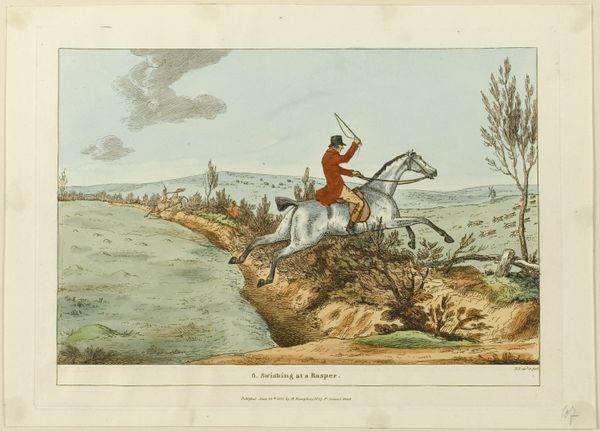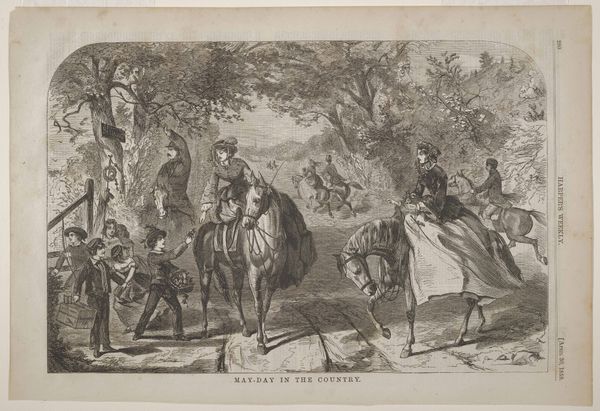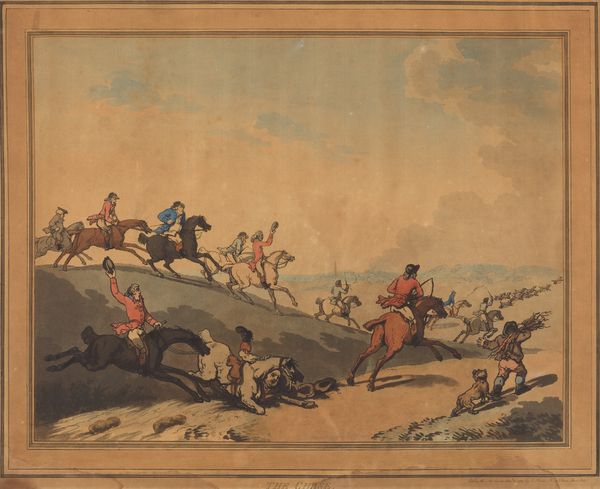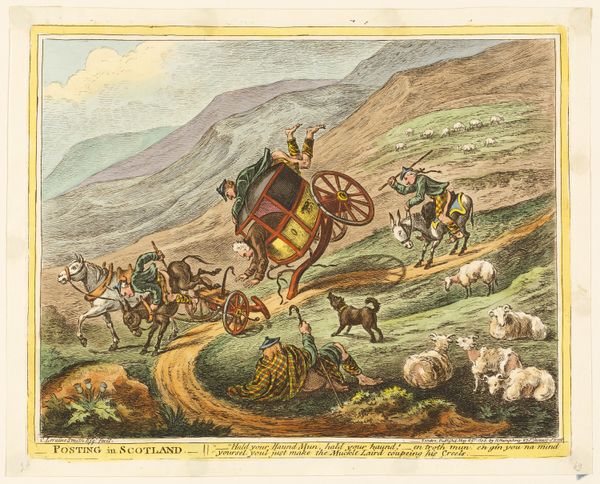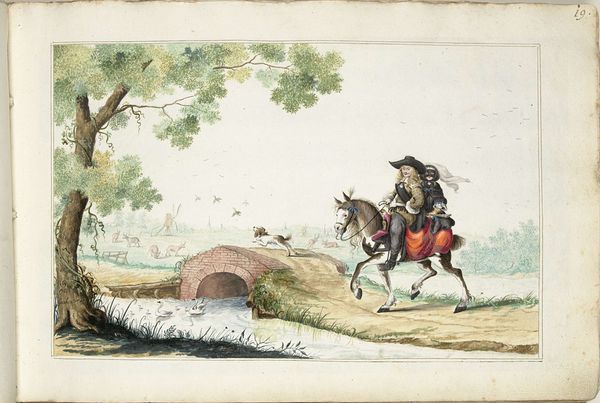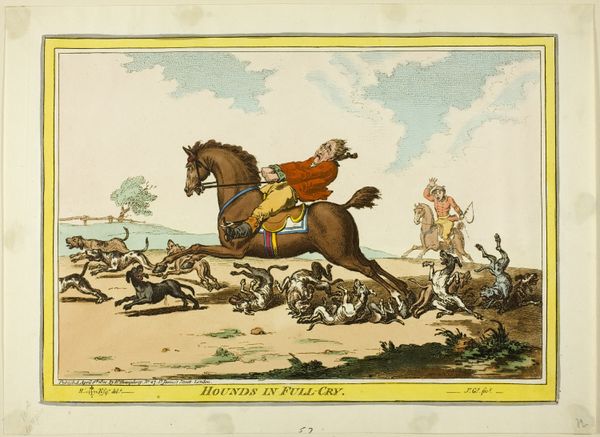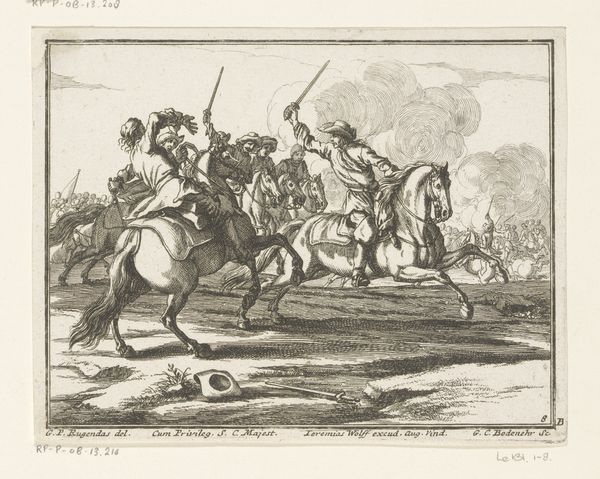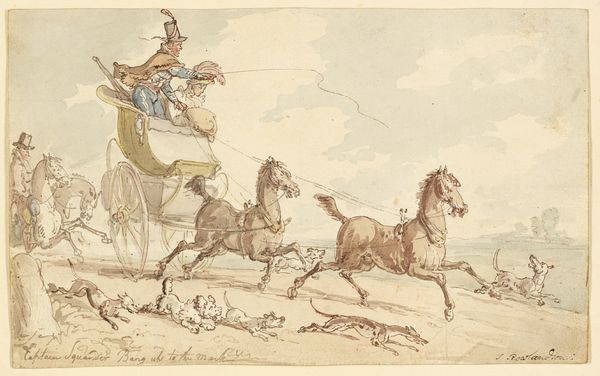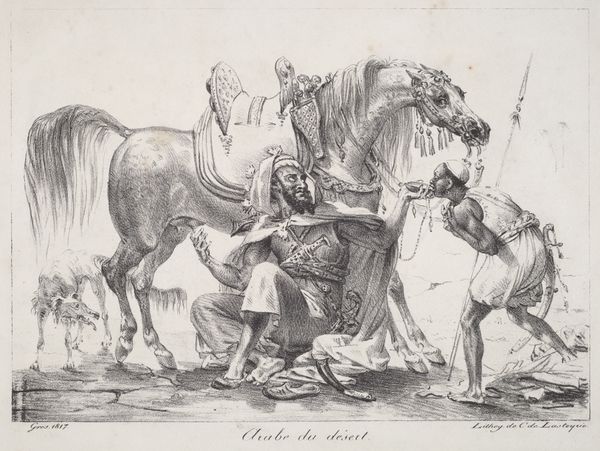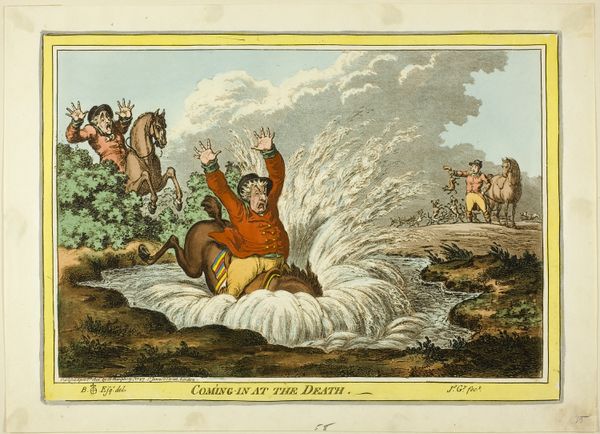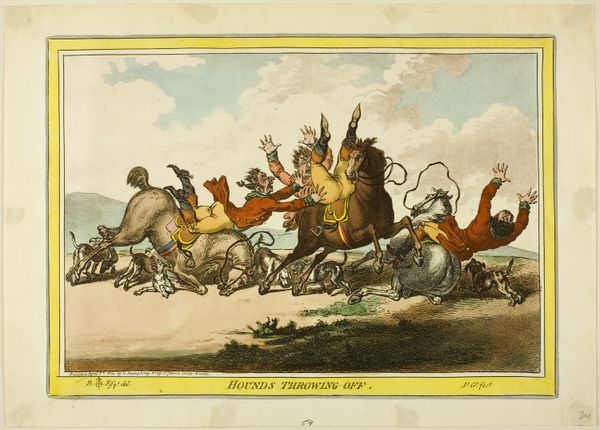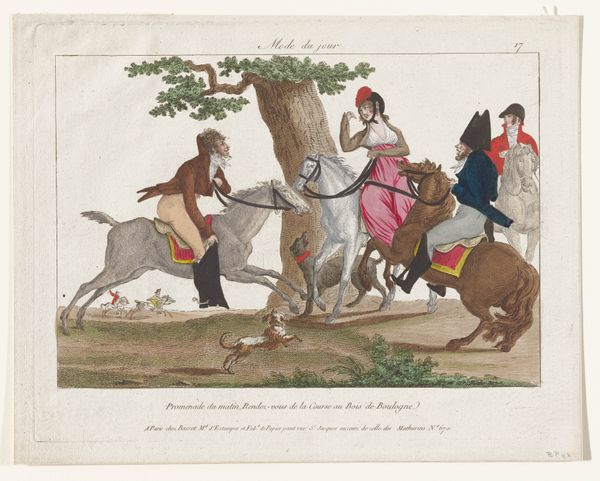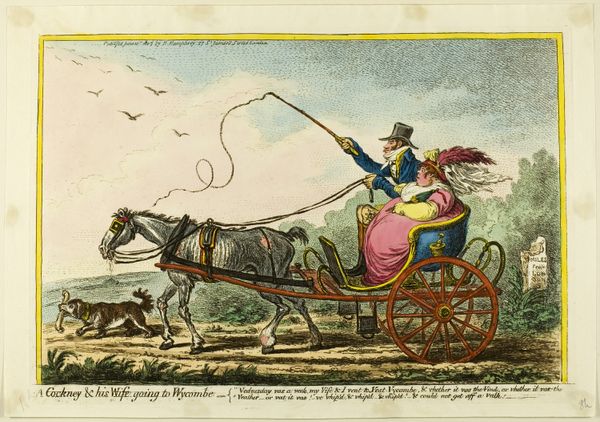
drawing, print, etching, paper
#
drawing
# print
#
etching
#
caricature
#
paper
#
romanticism
#
genre-painting
Dimensions: 230 × 335 mm (image); 248 × 350 mm (plate); 278 × 395 mm (sheet)
Copyright: Public Domain
Editor: Take a peek at "The Sound of the Horn," an etching on paper crafted around 1807 by James Gillray. It's a lively caricature now residing at the Art Institute of Chicago, showing a rider clearly losing control of his horse. I am getting the impression it’s a funny social commentary piece? How would you interpret its significance, particularly within its historical moment? Curator: Gillray, as you suggest, was a master of social commentary, and this piece speaks volumes about class and leisure in early 19th century England. The print media played a crucial role in disseminating political ideas and shaping public opinion, but how does Gillray’s presentation of the "hunt" and those who pursue it contribute to that discussion? Is he celebrating it, or mocking it? Editor: I think it's definitely mocking the upper classes. They look ridiculous here, almost out-of-control! And from what I recall of that period, sporting prints and satirical works were quite popular with the emerging middle class. It’s almost as if they want to poke fun at aristocracy who enjoyed these extravagant displays. Curator: Precisely! Gillray often targeted those in positions of power. These kinds of prints circulated widely, offering a critical perspective on the elite and their pastimes. By exaggerating their features and placing them in undignified situations, Gillray and his contemporaries engaged in a form of visual dissent that resonated deeply with the broader public. Do you think that is something museums and galleries highlight often enough, how artworks help create opinions? Editor: That's a very thought provoking idea... The image, viewed in light of its cultural context, definitely amplifies understanding! It really makes one wonder who owned these prints and what social circles they impacted. Curator: Indeed. Understanding art within the history of the art market and sociopolitical context helps unpack a much larger, significant history than initially evident at first glance.
Comments
No comments
Be the first to comment and join the conversation on the ultimate creative platform.
